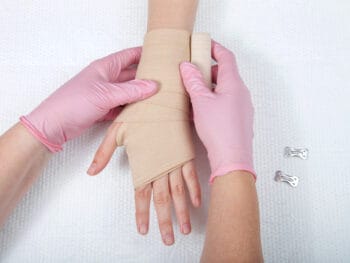
The importance of early reporting has to be driven home to the floor level employee. Reporting an injury will not lead to punishment, termination, or loss of current title. If this worker is in the course and scope of employment and something happens or doesn’t feel right, they have to feel that it is OK to report it to their manager. Dire consequences can occur should they continue working injured until their back or shoulder finally fully gives out.
Click Link to Access Free PDF Download
“9-Element Blueprint To Create Your Workers’ Comp Employee Brochure”
So, what are some tips to help you accomplish this goal?
-
Empower the employee to feel comfortable reporting any problems.
The main culprit that stops workers from early reporting is a negative consequence. Whether it is real or just shop floor gossip, workers must be told that reporting an injury or incident is OK. Not only does this help you pilot a better ship on the work comp risk front, but it also will empower your employees. The worker is the only one that knows if something does not feel right. This doesn’t mean they have to go to the clinic, but it is better to be safe than sorry. I would rather have a worker go and get checked out and come back with a clean bill of health versus not tell anyone and further compromise themselves.
-
Make sure the workers know that you care about their health and well-being.
This seems so simple but goes a long way. The common stance that production needs must be met and must be put above worker health is a mistruth. If you show workers that you care about their well-being, they will feel like a well-needed piece of the puzzle that gets the job done. Injuries will happen, and you want to have an action plan in place that will deal with injuries once they occur. This should not mean if someone comes to you and says that they are hurt that you tell them to get back to work because they do not look hurt.
-
Early treatment costs less and yields a better result.
If you catch an injury when it first happens, especially a sprain/strain, stats show that the worker will respond better to conservative treatment. Plus not only will they heal better but they will also miss less time from work, if any time at all. However, if the worker ignores the warning signs from their body and continue to soldier on, that is what will cost you much more down the road.
-
Early injury intervention means reduced lost production time.
Similar to the medical costs, if a worker gets the care they need early on chances are they will not miss much time from work, if any. They can still come to work in a reduced capacity in your light duty work program. I would rather have my injured worker on light duty for a period of 2-3 weeks versus 2-3 months, or worse result of them never returning to work for you at all.
-
At the end of the day, if the worker declines medical treatment have them sign off on it.
It is not essential that every person with a strain must go and get medical treatment. This is a judgement call that the employer and the carrier have to make. However should they decline medical treatment that you offer, you should have them sign something verifying that treatment was offered and declined. I have reviewed countless files where the employer states that treatment was offered and declined, later to have the employee state that they were never offered medical care and forced to return back to work. This creates the “he said-she said” scenario which nobody wins. But if you have a paper trail that the worker signed off on, now you have some evidence that can come in handy later down the road.
Statistics show that early intervention is very important when stacked up against lost work days and severity of injury. Do not disregard the injuries your workers present you. Take them all seriously, and create that paper trail. You never know when you are going to need it later on.

Contact: mstack@reduceyourworkerscomp.com.
Workers’ Comp Roundup Blog: http://blog.reduceyourworkerscomp.com/
Injury Management Results (IMR) Software: https://imrsoftware.com/
©2024 Amaxx LLC. All rights reserved under International Copyright Law.
Do not use this information without independent verification. All state laws vary. You should consult with your insurance broker, attorney, or qualified professional.















 Part 2: Discontinuing Workers’ Comp Temporary Total Disability Benefits
Part 2: Discontinuing Workers’ Comp Temporary Total Disability Benefits
